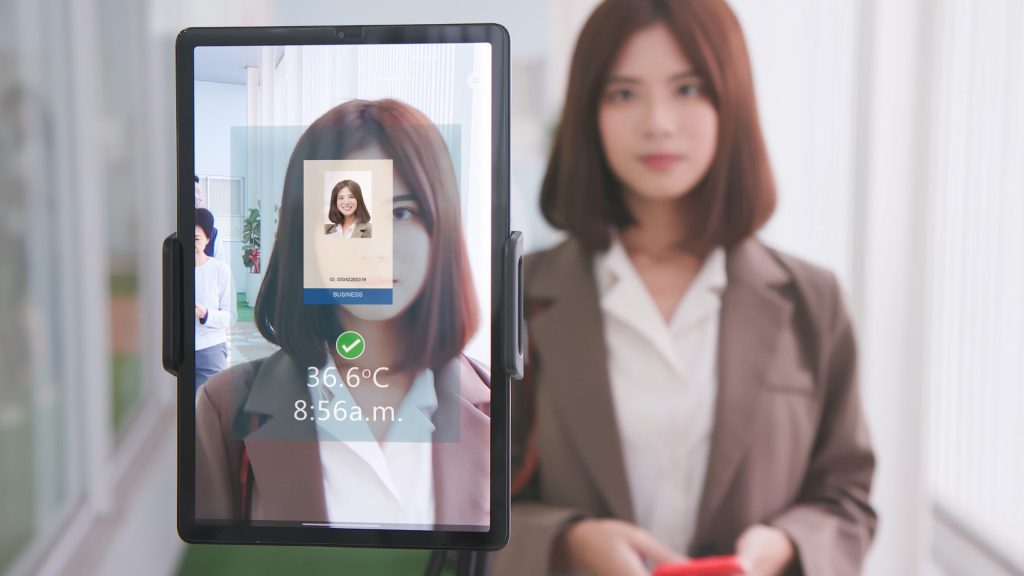Biometric verification in digital identity is revolutionizing the way we ensure the authenticity of individuals, reducing the risks of fraud and enhancing the security of online transactions.
Biometric verification in digital identity is any means by which a person may be uniquely identified by evaluating one or more biological traits of customer. These biological traits may include fingerprints, hand geometries, retina patterns, voice chord, and signatures.
Biometrics is gaining adhesion as a strong security degree and is reshaping the online identity verification industry. In the absenteeism of universal digital identities that can be used crossways and cross-border digital identity, document verification and biometric authentication services therapy the issue of trust between service providers and their customers.
Online businesses and transactions have enormous growth potential so is their exposure to cybercrimes. Digital identity verification process empowered with strong facial recognition process is the eventual fraud prevention resolution for online businesses to reduce their fraud losses. Enabling new customers to sign up for an account on a smartphone or computer system instead of using a physical location greatly enhances the opportunity for institutions to acquire more targeted customers.
Biometric verification in digital identity proofing is required to be performed before customer opens an account and the biometric authentication uses unique physical characteristics to verify the identity of a person such as fingerprints, face, retina, iris patterns, voice, and DNA.
Biometric Verification in Digital Identity
Biometric verification in digital identity provides legal non-repudiation when properly deployed in an end-to-end authentication solution because of the difficulty of copying customer’s biometric information. The use of standard digital biometric authentication process is recommended which is relatively considered as consistent and effective instead of shifting from one biometric identifier to another without appropriate logic or reason.
A copy of a customer’s unique identifier such as a voice print of a customer wanting access to the bank account information is made and stored in a database. When the customer returns to ask the bank a question about their account, ID verification would be required using the recorded voice. At that time, a new record would be captured and compared with the stored voice. If the new voice chord matches the one recorded in the database, the customer’s identity would be confirmed and access given.
Cloud technology is often used to make biometric information more accessible and portable. Cloud-based systems enable agencies and organizations to perform biometric identification on any individual, regardless of their location. The servers are no more vulnerable than those businesses use internally. However, the attack surface in the cloud is larger because cloud service providers are hosting multiple tenants.
The database where biometric data is stored is important. If a database containing the identification records is misused or compromised, the biometric system tied to such data would be vulnerable and inappropriate to use for verification. A biometric verification system depends on the use of biological characteristics that cannot be changed or replaced or replicated.
If the data tied to the system is not secured or if the data is compromised by any unauthorized person, such as extracted, deleted, or manipulated, then the data reliability would not be used for verification purposes. Institution would then need to have some other reliable and alternative digital verification processes, to perform the biometric verification in digital identity of customers. AI technology may identify the data compromises or misuse in such cases therefore institutions would need to deploy relevant AI technology to ensure that verification data of customers is not compromises or misused by unauthorized persons.
Final Thoughts
Biometric verification leverages unique biological traits, such as fingerprints, voice, and retina patterns, to authenticate individuals. As online businesses burgeon, so does their vulnerability to cyber threats. Biometrics offers a robust security solution, fostering trust between service providers and customers in the absence of universal digital IDs. While cloud technology offers greater accessibility, it also presents larger attack surfaces. The integrity of a biometric system is critically contingent on the security of its underlying database. If compromised, the system loses its reliability, necessitating alternative verification methods. As such, integrating AI to monitor and detect data breaches is imperative, ensuring that biometric data remains uncompromised and retains its core purpose: trustworthy verification.




